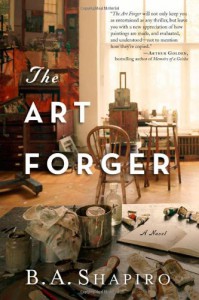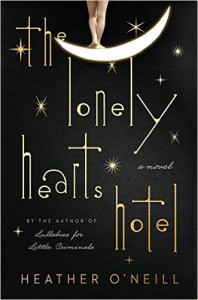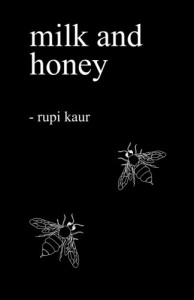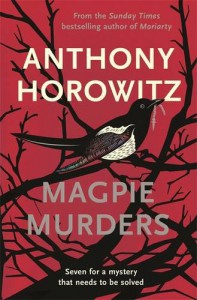
Uniquely Portable Magic
The title of this blog is taken from the Stephen King quote "books are a uniquely portable magic".




I enjoyed the historical detail, the art world setting and the mystery however, I didn't love the characters - the author just didn't bring them to life for me.
If you like to get immersed in characters, their motivations and back stories, you might want to give this one a miss however, if you enjoy a good mystery woven together with interesting real-world events, pick this book up.


A thrilling mystery set equal parts in Boston, Washington and Cambridge England, the story opens with a murder that attracts the attention of Alexander James, a reporter for the New England Chronicle. Alex’s ingenuity leads her to the story of a lifetime as she starts to unravel the reason why the son of one of the most powerful men in Washington was murdered.
Not only is the mystery complex and well-written, but you can’t help but cheer for the lead character, Alexander James as she tries to solve the mystery and beat the bad guy, all the while drinking too much and falling into bed with a delightful sounding English Lord, Lucien Sly.
While there doesn’t appear to be a sequel - yet - I would happily read more of Alex’s adventures!
I've had a busy - and stressful - past few weeks at work. I've glanced at a few reviews and posts but this morning, I finally had time to sit down and catch up on what the Booklikes community has been up to...
....and I have to say, you guys are the best cure for stress EVER!


A big thanks to ECW Press and NetGalley who provided this book in exchange for my fair and honest review.
This is a dark, crime-fiction novel set in Hamilton, Ontario that tells the story of three morally ambiguous cops and the murder that binds them together. Woody is the most likeable of the trio who turns his anger at the injustice of the world in on himself. Damaged, likely from his time in the military, Oswald turns his anger outward and uses vigilante justice to punish criminals at every opportunity. Dennis, brought up by a single parent father who was over-bearing, misogynistic and critical of his more sensitive son, is constantly out to prove himself to his fellow cops and deludes himself into believing that the only reason he isn’t liked is because he is so good at his job.
Overall, a pretty unlikeable team. What makes this book interesting however is the subtle connection that each of them has to the murder victim, a fellow officer who was 8 months pregnant at the time of her death.
As a Canadian, I also love stories that are set in Canada so I wish that the story spent a little more time providing more details about the surrounding city as the mystery played out. Hamilton is an interesting city, the ninth largest in Canada and the producer of sixty percent of Canada’s steel. Canada’s version of “steel town" has been the focus of much redevelopment in the recent past with new building in the downtown core generating an interesting and vibrant mix of artistic and blue collar.
The story was fast-paced, the writing good and as I note above, the mystery kept me engaged. The ending felt a bit rushed to me and while the characters were difficult to like, I cared enough about them to want to know “what happens next” with each of them.


Set in the early part of the 20th century, between the first and second World War, this novel is part love story, part feminist novel. It also sometimes feels like a fairy tale with parts of the story told in such a lyrical way, there should be a musical accompaniment.
In the winter of 1914 in Montreal, two babies are abandoned by their teenage mothers and end up in the same orphanage. Rose and Pierrot are both gifted entertainers and from a young age, use their talents to captivate their fellow orphans. Eventually, people outside the orphanage notice their talent and Rose and Pierrot are paraded through the parlours of the rich to generate funds for the orphanage. Not unexpectedly, none of the funds actually benefit the orphans but rather make the nuns’ lives - a cruel and perverse group - more comfortable.
Separated as teenagers, Rose finds herself sent to a rich home as a tutor for unruly children. Little do the parents know that Rose is not much better than an unruly child herself. Pierrot also finds himself in a rich household as a companion to an eccentric and elderly man who is estranged from his family. While neither situation teach Rose and Pierrot the skills they need to support themselves in depression-era Montreal, it becomes evident quickly that Rose is the pragmatic survivor while Pierrot remains the whimsical artist.
Reconnecting again as adults, Rose and Pierrot renew their love for each other and for the talent and quirkiness that connected them as young children. They work together to build a life and to make their childhood dream of becoming stage performers come true. The story is heart breaking and gritty, with even the happiest of moments shadowed by the harshness life at that time.
The writing in this book is wonderful. Experiences that I have never - in many cases, thankfully - had in my life are made so real through Heather O’Neill’s unique use of words.
A train trip to New York is described as follows:
“They went through a series of old, crotchety mountains. They were so old they didn’t look dangerous anymore. Occasionally a big boulder rolled off them into the middle of a road or landed on top of a deer, but on the whole they had found their place in the world. The rain had worn their peaks down, one argument at a time.”
This story makes a particularly moving statement on women and the struggles they face daily simply to be respected.
“Men were taught to have so much pride, to go out into the world and make something of themselves. This Depression was deeply humiliating. Since women were taught that they were worthless, they took poverty and hardship less personally.”
Or even more of a direct statement that as a woman,
“You were often only an ethical question away from being a prostitute.”
If I have a criticism of the story, I did find that it took a frustratingly long time for Rose and Pierrot to reconnect as adults. I understand that building suspense is necessary however, I felt that I had to suspend disbelief in order to accept the number of times that Rose and Pierrot crossed paths but didn’t actually meet each other. At one point, Pierrot exited by the front door of a room while Rose was entering through the back door.
That said, this book is simply captivating. It was difficult to climb out of the story and go back to regular life - I so desperately wanted Rose and Pierrot to escape the orphanage, find each other again, become rich and successful and live happily ever after! This book is a more realistic than that of course but you won’t be able to stop rooting for Rose and Pierrot.


I knew nothing about this book when a friend recommended it. In fact, when I opened to the first page, I expected a story steeped in the technological complexities of the dark web with some subtle social commentary on the value of anonymity on the internet and a cyberpunk vibe. In fact, based on the synopsis, I first tagged it as a “sci fi” read on Goodreads.
Instead, I found a creepy horror story set in Portland, Oregon that uses technology as a backdrop for demons who want to open a portal to hell. Not that technology and the dark web don’t play a part in the story because they do, particularly in the final third of the book. I can’t imagine anything more ominous than demons who are technologically savvy!
Interestingly however, the main character is completely technologically challenged. A journalist who lives for the story, I found Lela a slightly unlikeable character. Although I loved her “sidekick” - her dog, Hemingway. The cast of characters is rounded out with Lela’s blind niece Hannah who is outfitted with a prothesis called “Mirage” that allows her to see in a unique way, a formerly-corrupt televangelist now going by the name of Juniper and a mysterious woman who may (or may not) be immortal.
I really enjoyed the first part of the book as we meet all of the characters and start to get a glimpse of the horror to come. The epilogue is fantastic - I love where the author took the characters. I also really enjoyed the setting - I’ve had the pleasure of spending enough time in Portland on business that I recognize many of the landmarks, streets and of course, the truly amazing bookstore, Powell’s. If I have a criticism, it’s that there are a lot of characters to keep up with in a relatively short book (my edition is 253 pages including epilogue).
If you enjoyed Andrew Pyper’s The Demonologist or Joe Hill’s NOS4R2, you should consider picking this one up. It has the same creepy flavour and end of the world overtones, but be prepared for a faster pace and less character development.


Sometimes the creator is as interesting to me as the creation. So it is with Rupi Kaur’s Milk and Honey. This collection was originally self-published in 2014 by a then 22 year old Rupi Kaur, a Canadian poet, writer, illustrator and performer of Punjabi descent. At 22, I was lucky to find my way home on the bus by myself…Rupi Kaur was writing and self-publishing a collection of poems that bare her soul. Wow!
I’m finding it difficult to express how I feel when I read her poetry because it’s much more than just the words on the page - it’s the whole experience. She writes entirely in lower case and uses no punctuation other than a period. I read online that it’s a shout out to her Punjabi heritage. Here’s an explanation from her website FAQ:
“although i can read and understand my mother tongue (punjabi) i do not have the skillset to write poetry in it. to write punjabi means to use gurmukhi script. and within this script there are no uppercase or lowercase letters. all letters are treated the same. i enjoy how simple that is. how symmetrical and how absolutely straightforward. i also feel there is a level of equality this visuality brings to the work. a visual representation of what i want to see more of within the world: equableness.”
The lowercase writing, the illustrations that are woven throughout the poems and prose in the book, combine to make the experience feel intimate and meaningful. Even the book itself - a flat, black matt cover that is soft to the touch with simple hand-drawn bees the only adornment aside from the title and author - add to the experience.
The summary on the back perfectly describes the book:
this is the journey of
surviving through poetry
this is the blood sweat tears
of twenty-one years
this is my heart
in your hands
this is
the hurting
the loving
the breaking
the healing
I don’t read a lot of poetry collections. I read individual poems but rarely read a collection of poetry from cover to cover by the same author. As the description outlines, Milk and Honey is divided up into four sections: the hurting, the loving, the breaking and the healing. I liked “the loving” the best and if I’m honest with myself, I think it’s because it was uplifting and easier to read than the other sections.
no
it won’t
be love at
first sight when
we meet it’ll be love
at first remembrance cause
i’ve seen you in my mother’s eyes
when she tells me to marry the type
of man i’d want to raise my son to be like
The hardest reading for me was “the hurting” but it is the one that sticks with me the most. Throughout the collection, Kaur explores violence, rape, love, healing and femininity.
if i knew what
safety looked like
i would have spent
less time falling into
arms that were not
Rupi Kaur began sharing her writing on Tumblr and Instagram and is sometimes criticized by readers who feel that her poems aren’t original or sound a lot like other “instapoets” on the internets. I can only express my opinion and while some of the poems didn’t move me one way or the other, they were in the minority and it certainly wasn’t because I found them unoriginal. Most made me flinch, smile, nod vigorously, look away (and then look back) and in a few cases, laugh.
If, like me, poetry is not your first pick in reading, I encourage you to pick up this collection. It’s accessible, honest and authentic.


This is one of my all-time favourite series. They are consistently 4-star reads for me and from the first time I picked up “The Water Rat of Wanchai”, the first book in the series, I’ve been hooked. The novels revolve around Ava Lee, a young, gay, Chinese-Canadian forensic accountant who recovers money stolen in financial scams perpetrated by one shady businessman on another.
Born in Hong Kong and raised in Toronto, Canada, Ava is bicultural and as the series progresses, we learn a lot about Chinese culture both in Asia and in Canada. I read a book review in the National Post that describes Ava’s personality and how it is shaped much better than I ever could:
“Like any Hong Kong ID card-carrier, she’s brand-conscious, work-obsessed, pragmatic and loyal to her family. Like any Canadian passport holder, she’s culturally sensitive, well-mannered, able to blend in and independent.” - The Water Rat of Wanchai, reviewed by Kevin Chong, National Post, 2011
In the most recent instalment of the series, Ava gets a call from an old friend of her partner Uncle asking for a favour. Family loyalty kicks in and Ava finds herself on the way to the Philippines to investigate reports of an international terrorist training centre located on the remote island province of Tawi-Tawi. If the reports are true, it will destabilize the Philippine political landscape and economy and more terrifyingly, launch a deadly series of attacks on the world.
The last few books in the series, like this one (which is #10), have taken Ava outside of both Canada and China. This is a departure from the first books in the series but is no less effective in furthering Ava’s story and globe-trotting exploits. It maintains the central theme of the entire series and continues to present Ava with morally ambiguous options where no decision is clearly right or wrong. Ava is required to rely on her own judgement, morals and loyalty.
If you liked “The Girl with the Dragon Tattoo” by Stieg Larsson, you may want to consider picking up this series. While Ava is not as broken as Lisbeth Salander, her intelligence, kick ass martial arts skills and sheer tenacity are reminiscent.
Finally, a shout-out to the publisher, House of Anansi Press (and their imprint Spiderline). It couldn’t have been an easy choice to publish a series of books where the main character is female, non-white and gay…let alone the first novel which had “rat” in the title. Who picks up a book about a water rat...besides me of course...


This book hit on a lot of my favourite themes - Victorian London, a woman willing to risk her reputation to pursue a career she is passionate about, historical fiction and of course, a re-imagining of one of the most well-known unsolved murders of all time.
- What I liked about this book: the author included real photographs from the period at the beginning of many chapters. Victorian-era London came alive thanks to these pictures and the vivid descriptions woven throughout the story. The re-imagining of the Jack The Ripper murders was also very creative.
What made me go "meh" in this book: while I found the main character, Audrey Rose interesting, I would have liked to see her character a bit more developed and given more depth. She was supposed to be a strong young woman who was fighting for her right to be considered an intellectual equal with men but then in some scenes, she practically faded into the wallpaper she was so submissive.
This book is definitely targeted to a younger audience (aka not me) with the romance falling more under the heading of "cute" rather than "steamy" - which is a good thing as Audrey Rose is only 17.
It's a quick and entertaining read but I don't feel compelled to pick up the next book in the series. Not to say that I won't one day but it didn't leave me wanting more.


This book reminds me very much of the 1939 Winston Churchill quote: “It is a riddle, wrapped in a mystery, inside an enigma…”. Although Churchill was speaking of Russia at the time, this particular section of the quote is such an appropriate description of Anthony Horowitz’s book Magpie Murders that it is the first thing I thought of when trying to find the words to start this review.
An historical mystery set in the 1950’s pays homage to Agatha Christie. What makes this book thoroughly enjoyable however is that the historical mystery is wrapped within a modern day “whodunit”. That does not mean that the nods to Christie stop in the modern mystery - in fact, her real-life grandson, Mathew Pritchard, makes a cameo as a witness who overhears an important conversation that could be key to solving the entire puzzle. For those familiar with Agatha Christie’s story, Mathew Pritchard is the son of Christie’s only child, Rosalind, and famously received the stage rights to The Mousetrap as a ninth birthday present from his grandmother.
It really is two books in one as we read along with editor Susan Ryeland who has received the manuscript for author Alan Conway’s latest novel featuring Atticus Pünd, a german-born detective who solves mysteries in sleepy English villages in the 1950’s. I was engrossed enough in this first mystery that I was as equally horrified as Susan when we realized that the final chapter of the story was missing. Can a mystery lover imagine anything worse? This starts the modern day investigation as Susan sets out to locate the missing pages.
A must read for any mystery fan, this is a smart and cleverly twisted take on the “whodunit”. Why are you still reading this? Go out and get this book…….you won’t regret it!

A very big thanks to Urbane Publications and NetGalley who provided this book in exchange for my fair and honest review.
I will start by saying that I found it a difficult story to connect with. To be fair, I have not read the first two books in the series so perhaps doing so would have helped me invest more in the characters and their stories. Certainly the overall theme of solving mysteries in remote parts of Scotland in the 1800’s is interesting and apparently the first two books also follow the same main characters found in this third instalment of the series.
While a bit short on character development, the mystery itself is a good one. Unfortunately, because I couldn’t connect with the characters, it was difficult for me to feel any urgency about solving the mystery. The story takes place in the 1860’s and starts with Brogar Finn and Sholto McKay sailing from Fort William to a remote part of Scotland as representatives of a company that is finalizing a deal to buy Hestan Island and the small copper mine on it.
The story is filled with various characters who allude to a mystery that they have been covering up since the Crimean War. Central to this mystery are Kerr Perdue and Gabriel Merryweather who live on the island under agreement from their old friend who they fought with in the Crimean War, James Heron’s late father, where “something” happened that they have been covering up for 30 years. When a murder occurs on the island, past collides with present and Brogar and Sholto are driven to uncover all.
I love stories that take place in remote parts of Scotland. Peter May is one of my favourite authors and his Lewis Trilogy contains some of the best descriptions of remote Scotland I’ve ever read. In similar fashion, this story has some great descriptions of Hestan Island, the Solway Firth and the surrounding area. Again, the problem that I have with the book is character development. There are lots of characters and a number of different story arcs but without feeling something for the people involved, I found it difficult to care about whether they found the answers they were looking for.
This book will be published on January 18th of this year. Now that I’ve read the book, I wish that I had gone back and started with the first in the series. I have to believe that understanding more about the characters and their backstories would help me care more about them in this third installment.
I recently found Bookoutlet - uh oh. And of course, I only say "uh oh" because my TBR is already pretty healthy. Bookoutlet's motto is "read-iculously low prices" and they definitely deliver on that promise. The books are new and are either publishers' excess inventory or excess inventory that has been returned to the publisher by a book store. In some cases, the books have a small dot on the edge. They have a physical warehouse in both Canada and the United States and it took about 5 days for this whole big pile of lovely books to arrive on my doorstep!
And apologies - I can't figure out how to flip the picture. Will eventually figure it out but you get the point...lots of books!


I have really started off the year reading some great books! I'm not afraid to give a bad review or single star ratings and as I start reviewing with more purpose, I've challenged myself to not shy away from being critical. So far this year however, I've picked some pretty great books off of my TBR shelf to read. Yay me!
I love Sherlock Holmes and usually manage to either re-read one of Sir A C Doyle's stories or find a book that reimagines Sherlock Holmes in some way. In this case, Anna Kronberg is practicing as a doctor in 1889 London and meets Sherlock Holmes when they are both called in to examine a dead body found floating in the Thames. Dr. Anna Kronberg is a preeminent bacteriologist and there is concern that the deceased man may have contaminated the waterway with cholera.
Rather than the murder itself, it's another puzzle that initially draws Holmes' attention - the fact that Dr. Anna Kronberg is actually living and practicing medicine as Dr. Anton Kronberg...a man. She is doing this because it was very difficult for women to become practicing doctors and it was not until 1876 that England passed a law that allowed women to enter the medical profession. While this is 13 years before this story takes place, I can't imagine that it was particularly easy for women to become practicing doctors and in fact, the few women who managed to get a medical degree in England often chose to leave due to societal pressure and practice in other countries. For many reasons, Anna Kronberg made the decision to live as a man in order to be a doctor. The fact that Sherlock Holmes is the only one who has discovered her secret is not unbelievable given Holmes' investigative gifts. A quote from The Adventure of the Blue Carbuncle fits perfectly here: "My name is Sherlock Holmes. It is my business to know what other people do not know".
Needless to say, what appeared to be one more poor unfortunate who died and was disposed of in the Thames actually turns out to be indicative of something far more sinister. The Metropolitan Police quickly lose interest in the case but both Anna and Holmes continue to follow the evidence.
I find the partnership between Holmes and Kronberg believable. They are both logical, smart and not fulfilled unless their intellect is challenged. They certainly challenge each other in this book. I particularly like when Kronberg turns Holmes' methods of deduction against him. She did so early in the story in response to Holmes' analysis of her reasons for practicing medicine as a man. After she turns the tables on Holmes and concludes that his brilliance requires constant stimulation and goes on to deduce his use of cocaine and the playing of the violin, she turns on him with "It feels like a stranger just ripped off all your clothes, doesn't it? Don't you dare dig into my private life again."
While the mystery is straight forward, the character of Dr. Anna Kronberg and the relationship she has with Sherlock Holmes is unique and original.


I love Sherlock Holmes and usually manage to either re-read one of Sir A C Doyle's stories or find a book that reimagines Sherlock Holmes in some way. In this case, Anna Kronberg is practicing as a doctor in 1889 London and meets Sherlock Holmes when they are both called in to examine a dead body found floating in the Thames. Dr. Anna Kronberg is a preeminent bacteriologist and there is concern that the deceased man may have contaminated the waterway with cholera.
Rather than the murder itself, it's another puzzle that initially draws Holmes' attention - the fact that Dr. Anna Kronberg is actually living and practicing medicine as Dr. Anton Kronberg...a man. She is doing this because it was very difficult for women to become practicing doctors and it was not until 1876 that England passed a law that allowed women to enter the medical profession. While this is 13 years before this story takes place, I can't imagine that it was particularly easy for women to become practicing doctors and in fact, the few women who managed to get a medical degree in England often chose to leave due to societal pressure and practice in other countries. For many reasons, Anna Kronberg made the decision to live as a man in order to be a doctor. The fact that Sherlock Holmes is the only one who has discovered her secret is not unbelievable given Holmes' investigative gifts. A quote from The Adventure of the Blue Carbuncle fits perfectly here: "My name is Sherlock Holmes. It is my business to know what other people do not know".
Needless to say, what appeared to be one more poor unfortunate who died and was disposed of in the Thames actually turns out to be indicative of something far more sinister. The Metropolitan Police quickly lose interest in the case but both Anna and Holmes continue to follow the evidence.
I find the partnership between Holmes and Kronberg believable. They are both logical, smart and not fulfilled unless their intellect is challenged. They certainly challenge each other in this book. I particularly like when Kronberg turns Holmes' methods of deduction against him. She did so early in the story in response to Holmes' analysis of her reasons for practicing medicine as a man. After she turns the tables on Holmes and concludes that his brilliance requires constant stimulation and goes on to deduce his use of cocaine and the playing of the violin, she turns on him with "It feels like a stranger just ripped off all your clothes, doesn't it? Don't you dare dig into my private life again."
While the mystery is straight forward, the character of Dr. Anna Kronberg and the relationship she has with Sherlock Holmes is unique and original.




 2
2





